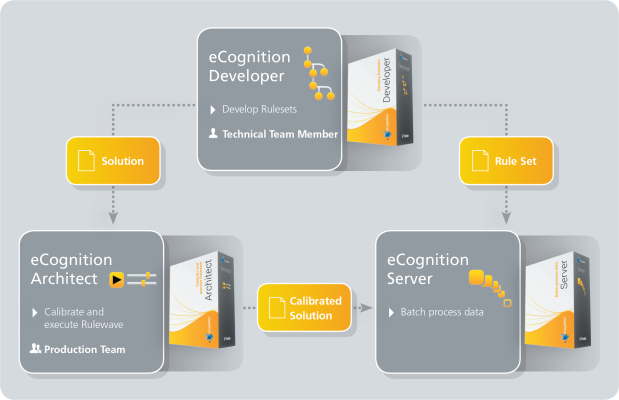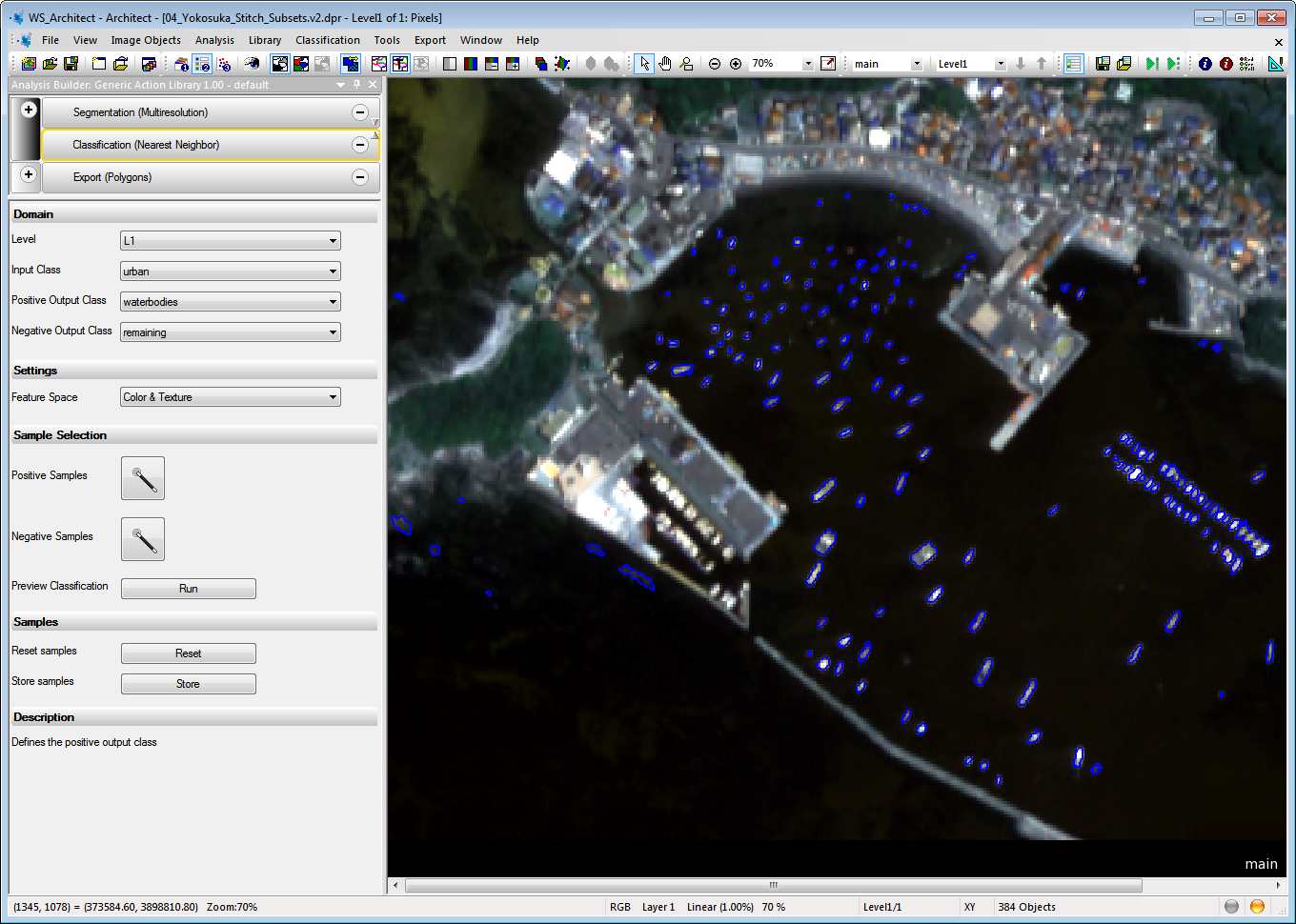
eCognition Architect enables non-technical users to configure, calibrate and execute versatile image analysis workflows. Users can configure new workflows using a library of analysis actions (‘rules’) that are part of an eCognition application or created using Architect. The workflow is then calibrated for the particular image data set using simple graphic sliders or sample-based training. These calibrated applications can be saved and submitted for batch execution using the eCognition Server.


eCognition Architect provides the following additional capabilities for end-users running multidimensional image analysis applications:
DICOM support is provided for medical imaging formats and including common modalities such as CT, MRI and PET data. Metadata is extracted from the DICOM images and can be used to control the analysis process.
A powerful generic import tool is provided to enable the import of multi-dimensional image data from a sequence of files and folders in a range of common image formats.
A fully multi-dimensional data model supports 2D, 2D time series, 3D and 3D time series data.
An integrated viewer enables users to examine single or multiple Architect images side by side. Three different projections of the image can be displayed – XY, XZ, and ZY. View settings can be synchronized and objects picked from these displays. Time series data can be viewed in movie mode.
Each eCognition client incorporates a sophisticated 3D visualization environment. This provides an intuitive environment for reviewing results and developing new image analysis applications.
Visualization functionality includes surface rendering of classified objects, object selection, OpenGL hardware acceleration, rotation, class display and transparency selection.